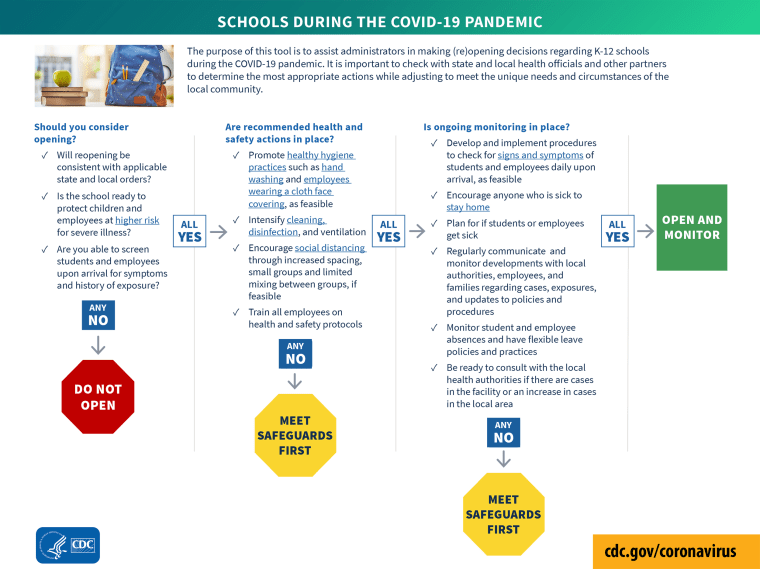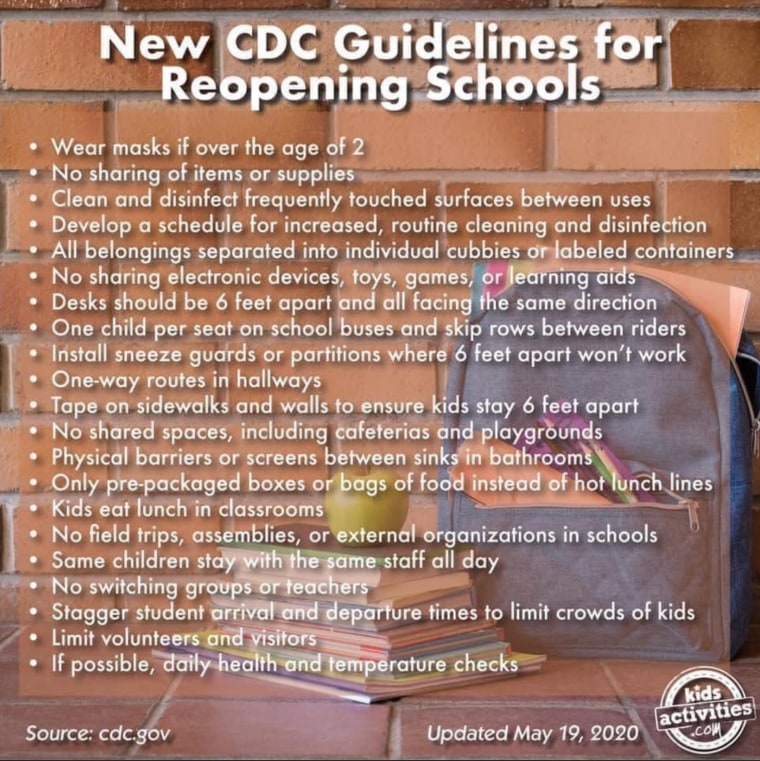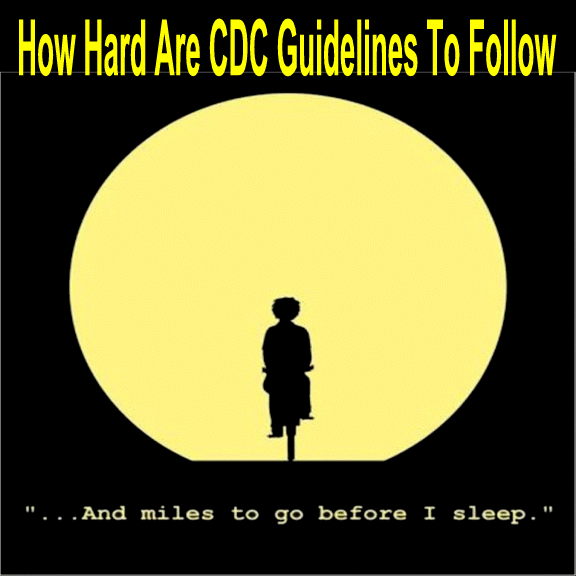CDC guidelines for reopening schools: What's real?
What will it really take to put children back in school buildings safely this fall?
The Center for Disease Control (CDC) released a "Schools Decision Tool" this week with recommendations for reopening schools during the COVID-19 pandemic.
Parents are reacting strongly — either in relief or in outrage — at the changes the recommended CDC guidelines for reopening schools would cause. While alarmist posts on social media about the recommendations have upset many, the reality of the CDC guidelines is not so black-and-white.

The CDC tool offers specific suggestions for how to ensure the safety of students and faculty and staff if schools reopen in the fall. These include detailed recommendations for hygiene and face coverings, cleaning and disinfecting, classroom layouts and lunchtime procedures, and class and bus schedules.
It's not a simple checklist. The CDC states each school "should be guided by what is feasible, practical, acceptable, and tailored to the needs of each community."
After the CDC released the guidelines, some of their recommendations were paraphrased in memes that went viral on social media. In simplifying the recommendations into memes, a few essential words were left out, making them seem like rules instead of suggestions.
For instance, the CDC recommends that schools "teach and reinforce use of cloth face coverings," while acknowledging that "face coverings may be challenging for students (especially younger students) to wear in all-day settings."
So the CDC advises that staff and students should wear masks "as feasible," especially when physical distancing is hard to do. It says that children younger than 2, anyone who has trouble breathing, or anyone who would be unable to remove the face covering without help should not wear them.
But the memes paraphrasing the guidelines just state, "Wear face masks if over the age of 2."
Although the meme says things like "No field trips, assemblies, or external organizations," the actual recommendation from the CDC is to "limit" these activities or pursue alternatives "as possible." It recommends the same for areas like playground equipment: "Clean and disinfect as much as possible."

Parents have mixed feelings about what the CDC guidelines might CONTINUE READING:CDC guidelines for reopening schools: What's real?















